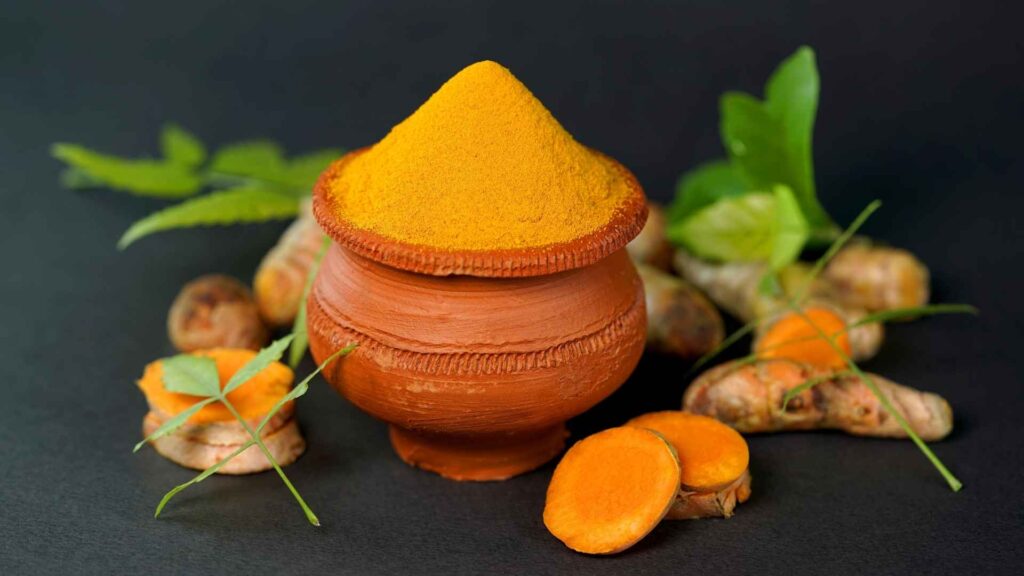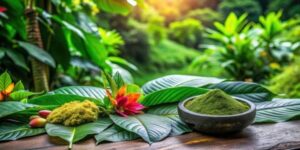Turmeric and kratom are beloved within the wellness community, but the combination of the two has been generating buzz among natural supplement enthusiasts.
Whereas turmeric is well-known for curcumin and its antioxidants, kratom is not trending due to its unique alkaloid profile that reacts to your body’s receptors.
What is fascinating about this combination is the effect turmeric’s active ingredients have on the potency, intensity, and duration of kratom’s effects, both in the traditional setting and according to contemporary user experiences.
In this blog, we’ll explore if these two botanicals complement each other well, delving into the science behind their synergism and the anecdotal experiences of those who combine them.
We’ll dissect the right ways to combine kratom and turmeric, some potential benefits to look out for, and the mileage you may get from this healing pair.
Whether you are seeking to boost the effects of your kratom or you are just interested in this herbal blend, you’ll get some real, scientific information to inspire your experimentation.
What Is Turmeric?
Turmeric is a root plant that is part of the ginger family. Originating from southern Asia, its root is used extensively in curry powders and other Asian cuisine.
The active compound in turmeric is curcumin, with anti-inflammatory and antioxidant effects. It is these properties that make it a preferred home remedy for a plethora of health ailments.
It has been a part of traditional Chinese and Indian medicine for centuries. Its best-known application is as an anti-inflammatory. Inflammation is a natural process that the body uses to heal wounds and defend against bacterial and viral infections, but it can become chronic and lead to an array of health problems.
Curcumin, found in turmeric, has been observed to calm inflammation at the molecular level.
Turmeric is a powerful antioxidant as well. Antioxidants are compounds that counteract toxic agents, called free radicals. Unstable molecules known as free radicals can damage cells, causing inflammation and other health problems.
Curcuminoids, the active compounds in turmeric, are strong antioxidants that can help protect cells from damage caused by free radicals.
The health capabilities of turmeric extend beyond anti-inflammation and antioxidants to include increased mental function, combined with blood sugar control and cardiovascular benefits.
The compound within turmeric is believed to possess cancer-blocking effects. Most people view turmeric as a natural wonder drug because it offers a broad spectrum of health benefits.
Understanding Kratom
Kratom is a tropical evergreen tree from the coffee family. Turmeric exists natively in Southeast Asia, where people have used this herb as a part of their medicinal practices for centuries.
Kratom users initially crush the tree leaves before making them into tea. People can purchase this product either as powder or capsules.
Scientists identify mitragynine and 7-hydroxymitragynine as the main active alkaloids in kratom. The impacts of kratom emerge as mild during initial intake but intensify when the dosage increases.
The United States Drug Enforcement Administration (DEA) does not currently regulate kratom usage. The World Health Organization (WHO) declared kratom safe to use because it lacks addictive properties.
The use of kratom faces disagreement among various groups. Multiple people maintain that kratom functions as a beneficial instrument to address multiple situations.
The kratom tree produces green glossy leaves which reach a maximum length of 12 inches (30 cm) and a maximum width of 6 inches (15 cm). White flowers in clusters remain small in size. The round fruit of the kratom tree displays either red or yellow drupes.
The kratom plant consists of more than 40 compounds, with many alkaloids among them. The active compound that produces most of kratom’s effects is the mitragynine alkaloid found in the plant.
The main traditional methods to consume kratom involve either chewing its leaves or steeping them to make tea. Manufacturers produce capsules or extract formulations from kratom powder.
The Potential Synergy: Mixing Turmeric with Kratom
Turmeric could be a prevalent spice utilized in numerous dishes, but did you know that it can also be utilized to potentiate kratom? Turmeric contains a dynamic ingredient called curcumin, which has been shown to extend the impacts of kratom.
When taken together, these two substances can deliver a more effective effect than either one alone.
So, how much turmeric to required with kratom? The sum will change depending on your body chemistry, but a common beginning point is 1 gram of turmeric for every 8 grams of kratom.
On the off chance that you discover that this isn’t sufficient to deliver the specified impact, you’ll increase the amount of turmeric up to 3 grams per 8 grams of kratom.
Be beyond no doubt that too much turmeric can cause gastrointestinal disturbances, so it’s best to begin with a smaller amount and increment it steadily as needed.
When taking turmeric to potentiate kratom, it’s important to keep in mind that the impacts will take longer to kick in. Subsequently, it’s best to require these substances at least an hour some time recently you would like the impacts to start.
Taking them with nourishment can also help decrease queasiness and increase absorption. As continuously, begin with lower measurements and increment as required until you discover the culminate combination.
Why Take Turmeric with Kratom?
- Enhanced Bioavailability: Curcumin in turmeric is known to have low bioavailability on its own. However, when combined with other substances, its absorption can improve. Some believe that taking turmeric with kratom may enhance the body’s ability to absorb kratom’s active compounds.
- Anti-Inflammatory Properties: Turmeric’s anti-inflammatory effects might complement kratom’s potential benefits, especially for those seeking relief from discomfort.
- Antioxidant Support: Turmeric’s antioxidant properties can help combat oxidative stress, potentially supporting overall well-being when combined with kratom.
Is It Safe to Mix Turmeric and Kratom?
On the whole, I highly recommend combining kratom and turmeric to get the most bang for ur buck. Be sure to start with a low dose, and drink plenty of water if you want to avoid potential unwanted side effects.
Considerations and Cautions
While the combination of turmeric and kratom might offer potential benefits, it’s crucial to consider the following:
- Lack of Extensive Research: There’s very little actual scientific proof about the interaction between the two substances. Much of the information is based on stories, and your mileage may vary.
- Potential Interactions: Both turmeric and kratom can interact with medications and other substances. Consult a healthcare professional before combining them if you are taking medication or if you have any underlying health issues.
- Dosage Awareness: Balancing low doses of the two substances can ensure your reaction to the combined treatment is closely monitored. Changing habits of posture should be done tentatively and with professional assistance.
Incorporating Turmeric and Kratom Safely
If you’re considering trying this combination:
- Consult a Healthcare Professional: Before starting any new supplement regimen, especially combinations, seek advice from a qualified healthcare provider.
- Monitor Your Body’s Response: Pay attention to how you feel after taking the combination. Note any changes in mood, energy levels, or physical sensations.
- Stay Informed: As research evolves, stay updated on new findings related to turmeric, kratom, and their potential interactions.
Final Thoughts
Turmeric and Kratom. It is no secret that for those in the natural wellness community, the marriage of curcumin and kratom is a point of interest for many.
It’s important to use all of this stuff with caution, awareness, and help from a professional because of the potential benefits.
Like any supplement or home remedy, everyone is different, and what works for one person will not for another. With combinations like these, safety first and shared persuasion are critical.
Read More







